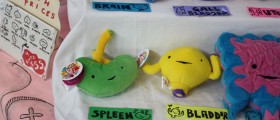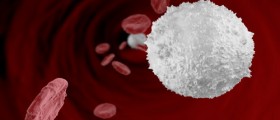
Spleen is a fist shaped organ located in upper left portion of the abdomen, just beneath the rib cage. It performs several important functions in the body. However, in the past the spleen was considered to be an organ of mystery because it was unknown what this organ does for the human body. In ancient Greece, doctors believed that the spleen is a source of melancholy or black bile. Black bile was one of the four basic fluids, known as “four humors” present in the body. It was believed that four humors must be in balance to maintain good health. Excess production of black bile was thought to lead to melancholy followed by sleepiness and irritability. Traditional Chinese physicians believed the spleen is associated with will power and temperament. Today, scientists know what functions the spleen performs.
Characteristics of Spleen
Spleen is the major organ of the lymphatic system and part of the immune system.
Spleen is present in almost all vertebrate animals. This purple colored organ may vary in shape and size. In humans, it is usually shaped as a fist, weighs about 150 grams and is around 4.3 inches long. However, size of the spleen slightly increases during and after digestion. It is located beneath the 9th to 12th thoracic ribs and unless it is enlarged, it can not be easily palpated. Enlarged spleen is known as splenomegaly. The spleen can become enlarged due to sickle cell anemia, rheumatoid arthritis, systemic lupus, leukemia, lymphoma or infections such as malaria and mononucleosis.
Functions of Spleen
Spleen consists of two types of tissue, namely the red pulp and the white pulp. Each pulp performs specific functions. The red pulp is made up of sinuses or sinusoids which contain blood. The red pulp acts as a filter because it removes old and damaged red blood cells from the body. At the same time it stores monocytes, type of white blood cells that protect and promote healing of inflamed or injured tissue. The white pulp is known as Malphigian bodies of the spleen and it is an active part of the immune response. The white pulp consists of small nodules that aids in production of antibodies to fight infections. The spleen also reserves extra platelets required for blood clotting. Furthermore, it produces substances such as opsonins, properdin and tuftsin that support the immune system. Before birth, the spleen is responsible for production of red blood cells. This function is taken over by the bone marrow after birth. The spleen is not a vital organ and people can live without it. However, in case of surgical removal of the spleen, an operated person will have increased susceptibility to infections.
















Your thoughts on this
Loading...